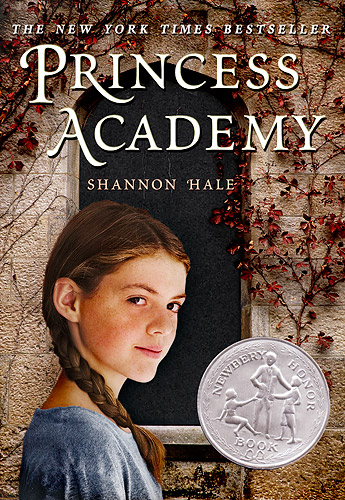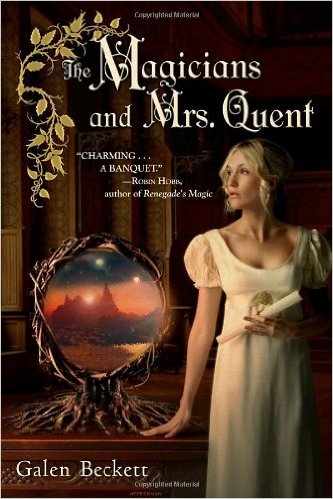Romances in Books
Let’s face it, it’s pretty much omnipresent in literature; pick any given book, and the two main characters, or one main character and a side character, will strike up a bit of a romance most of the time, regardless of how much sense it makes for them to do so. From Cinderella to Romeo and Juliet to Harry Potter, even if romance isn’t the main focus of the story, it typically shows up somewhere. It’s part of a way to bring drama into a story and draw readers in, and gives them something relatable.
When I was a kid, I typically ignored romance; it wasn’t something that interested me yet. When I was a young teen, I saw “romances” (or, at least, the potential for one) between the main character of a novel and any character of the opposite sex they spent enough time around. A year later, love-sick over the fact that my friend hadn’t returned my feelings, I identified with characters struggling with their own private romances and wrote romances into my novels (they tended to include one male main character and one female main character for just that purpose). I admit that I was a bit weird about romance when I was young; Disney had lead me to believe that two people could fall in love and get married and live happily ever after without going through the hassles of arguments, insecurities, and knowing each others names, and let’s face it, a lot of work meant for adults doesn’t make the romances much more realistic.
Then I got older. I’m not precisely sure when it happened; maybe when I was ninteen. I would read a book that had a romance in it and think, “…Hang on. Why is that romance even there? What do the characters have in common? What sort of chemistry do they have together? How can I expect two characters who’ve known each other for only a few weeks to declare their undying love?”
This was a process that began when I was younger; even when I was fourteen reading Sabriel — by which time I was going through the afore-mentioned love sick phase — I was exasperated by the main characters falling in love after knowing each other a grand total of six days. It’s just an attitude that became stronger and more common as I got older and went through my own relationships, and learned what was normal and not normal. I increasingly saw romance as a distraction from the main story, not a nice addition to it, and related less and less with the characters going through those relationships.
Now I’m very reluctant when it comes to romance. I typically don’t include it in any of my own novels any more unless I think it has a place in the story; unless it can affect the main plot, enhance it, or move character development forward, I shy away from it. I’ve developed something like an aversion to it in the books I read; if the blurb of the book includes hints the romance between the characters is either the driving force of the novel, the whole point of it, or makes up a significant portion of it, I’m more hesitant about picking up the book. I avoid the romance section of the bookstore like the plague and won’t be caught in public reading a pure romance story.
So what’s the reason for my vitriolic attitude towards romances? Typically it’s how they’re written into the story. Those of you who’ve read my review of The Magicians and Mrs. Quent will remember how I complained about the romances in it, and both of them are a perfect example of what I mean.
Ivy’s relationship with Rafferdy goes nowhere. This is a prime example of the type of romance I hate most: the ones that divert from the story. TV Tropes calls this the Romantic Plot Tumour; in other words, a romance that starts as a side plot only to eventually hijack the main story. One of the easiest ways to identify a Romantic Plot Tumour is to try skipping all the romantic parts and seeing if the story still made sense, and indeed, the story was actually more cohearent if you skipped Ivy’s and Rafferdy’s relationship: it takes up the first half of the novel, has no bearing on the over-all plot, and just means that by the time you get to the end of it and to the point where the story starts you’ve forgotten a lot of the details given at the beginning of the novel (the fact that I took a months-long break from that book because the first half of it went nowhere probably had something to do with that). Every time Ivy and Rafferdy appear together after that, and every time Rafferdy appears, the failed romance is mentioned, and while ex-lovers would naturally be awkward around each other, the fact that these references only exist to show how right for each other Ivy and Mr. Quent are just made me grow bored of them.
The second romance in the book, the one between Ivy and Mr. Quent, left me annoyed for an entirely different reason. Yes, the romance between Ivy and Rafferdy was a distraction, but at least it was fleshed out and developed semi-naturally and made sense; Ivy and Mr. Quent have far less in common, he’s twice her age, they fall in love and marry in a matter of weeks, and the book has their entire romance transpire in a mere few pages instead of the two hundred pages devoted to Ivy and Rafferdy. TV Tropes calls this being Strangled by the Red String, and it’s just as deplorable as the Romantic Plot Tumour. When characters have been Strangled by the Red String, they fall in love because the author says they fall in love, damnit, logic and personalities be damned, and the end result in the most extreme cases is a romantic pairing about as likely as a squid pining after a mammoth. In this case, we have to take the author’s word for it that the main couple is right for each other; we get no chance to judge for ourselves, no chance to see it happen, and for those who enjoy romance, no chance to enjoy the ups and downs of two characters slowly and naturally falling in love, and seeing the resulting relationship go through tumult and triumph as the story goes on.
I find many relationships, especially in teen literature, to fall into one of those categories. This is part of the reason why I love buying from the young readers section of the store (books meant for children ages 9 – 12); the most romance you find in those books are typically a kiss between teenaged characters, and for the most part they don’t appear at all. Even adult literature tends to treat romance as something that happens far too easily, and too often there’s no reason for it to have happened in the first place.
And yet, despite this, I can still sometimes enjoy a relationship in a book. It’s finicky, but there are a few cases where the romance has been written well enough that I get into it. Harry Potter had one such romance between Ron and Hermione; the trouble the relationship went through was presented for all to see, and yet any time the focus shifted to the romance, it only stayed there for a couple of pages before moving back to the main story, which I found quite refreshing. Will-They-Won’t-They relationships can also draw me in sometimes, especially if it’s mostly left unsaid and only referred to through glances the characters give each other and hinted at behind the words they say. In these cases, I can let my imagination run wild, and if I like it, support it; if I don’t like it, I can easily ignore it, especially if it’s never said directly, and focus on the parts of the story I do like. These don’t come up much in fiction, unfortunately, and so there’s rarely a romance any more that really draws me in.
But there’s a problem; let’s face it, a real romance is pretty boring. Most people fall in love after dating for a while, go on a few more dates, and after a couples of years, maybe marry; or maybe they argue too much and break up, or decide they’re not right for each other, or just grow bored of each other. Fictional romances therefore have to be somewhat unrealistic to stop readers from being subjected to something without enough substance to them, but often the result goes too far into the unrealistic side of things, and as such you get Snow White and Prince Charming falling in love after catching sight of each other through Snow White’s bedroom window, or Bella and Edward falling in love a third of the way into their novel and marrying each other less than a year later. A truly realistic relationship can be unsatisfying for a reader because they don’t get to see anything happen, or, if the romance isn’t in focus and really just gets mentioned in an “I’m married” or “I’ve got a date tonight” sort of way, comes off more as a useless aspect of the story that doesn’t need to be there. Therefore, a romance needs some attention paid to it, and it needs to have some effect on the story, to stop it being completely irrelevant. There’s a way to make a romance really work in a story, but it’s a thing too few authors really know how to do, to my eternal disappointment.
I can tolerate most romances, as long as they’re not a Romantic Plot Tumour or a case of the characters being Strangled by the Red String; I’m not really enthusiastic about the romantic scenes, but nor am I too bored or exasperated by them. There’s no sign it’ll ever leave, and frankly I would be surprised if it did. All I can hope is that we’ll learn to write romances more realistically in the future, and that authors looking to entertain us with stories of love can hit the wonderful balance that makes a romance both realistic and fulfilling.




One Comment
Pingback: